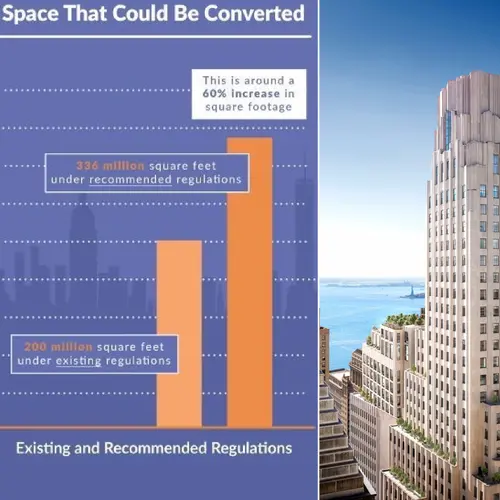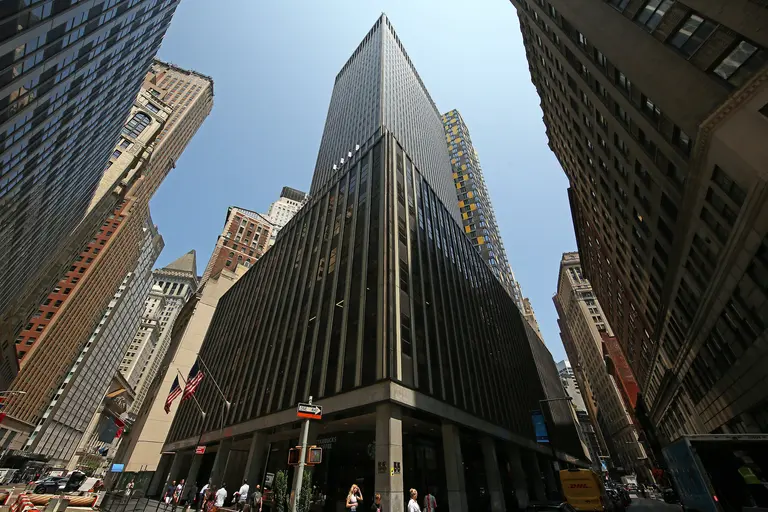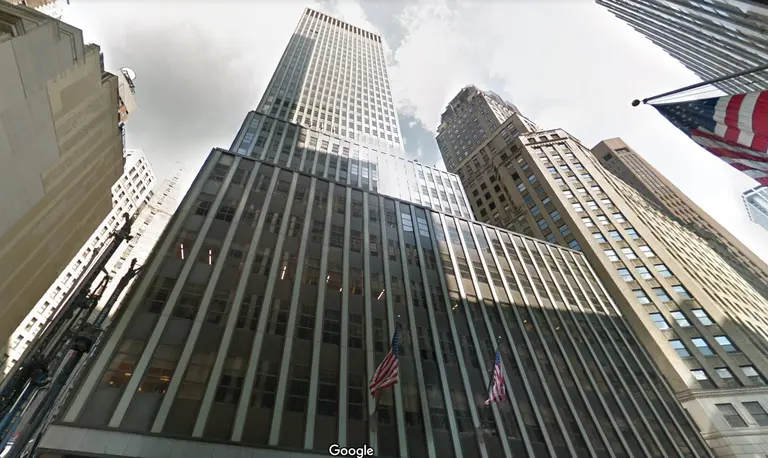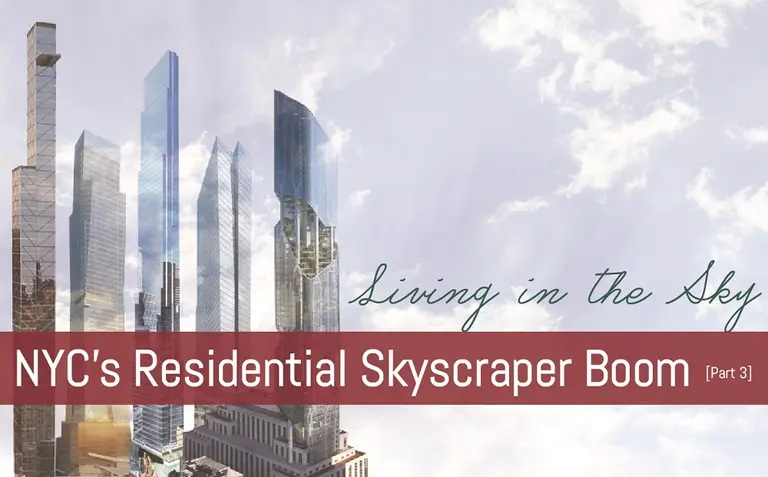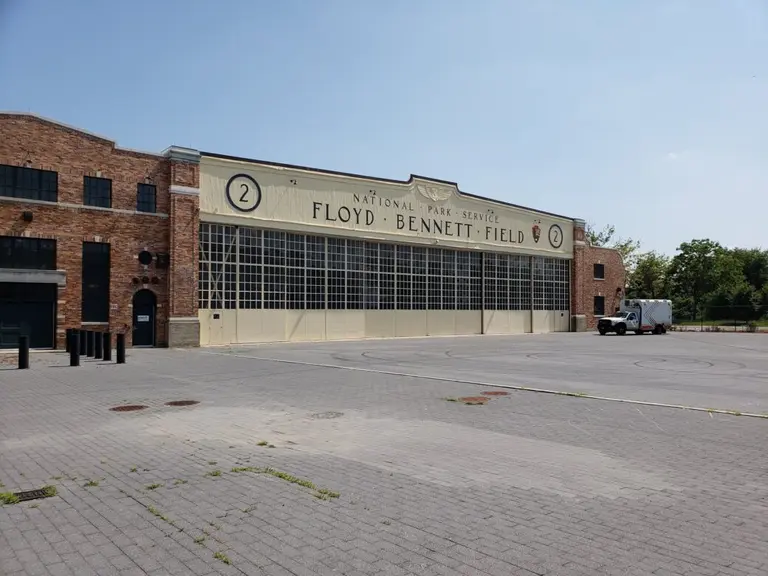NYC’s plan to convert office space into housing could create 20,000 homes

Photo by Tomas Anton Escobar on Unsplash
In December, Mayor Eric Adams and Gov. Kathy Hochul announced a plan to address the needs of post-pandemic New York by creating mixed-use neighborhoods in central business districts to draw more residents, businesses, and tourists. The plan advocated for the much-discussed idea of converting vacant office buildings into homes, a solution that tackles both the city’s housing crisis and lagging retail growth by making zoning laws more flexible. On Monday, Adams announced a list of specific recommendations for converting underused offices into 20,000 homes for 40,000 New Yorkers over the next decade.
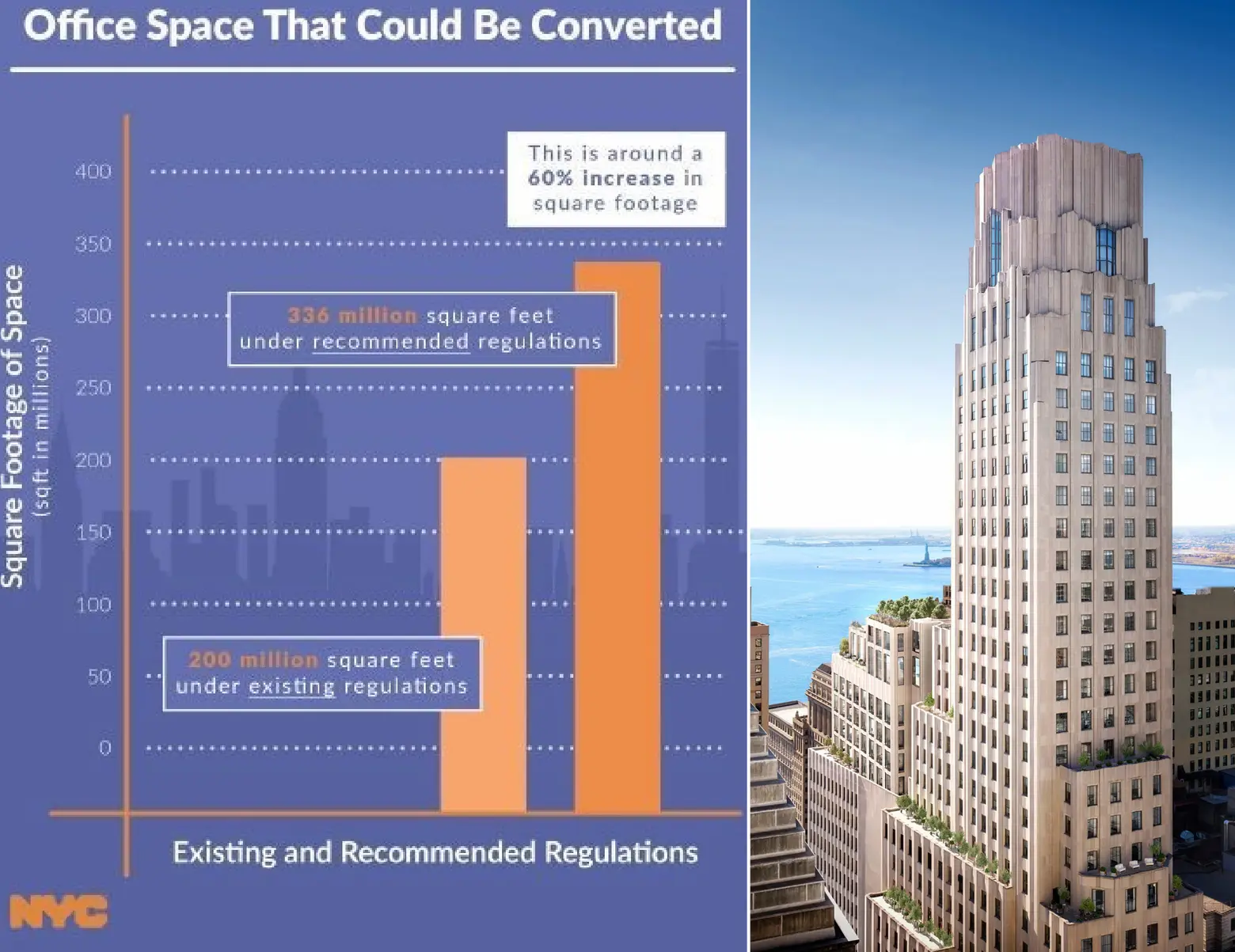
Credit: New York City Mayor’s Office (l); One Wall Street, the city’s largest office-to-residential conversion. Credit: Macklowe Properties (r)
According to Monday’s announcement, the recommendations are the result of a study conducted by the 12-member Office Adaptive Reuse Task Force and led by the city’s Department of City Planning (DCP) Director Dan Garodnick. The recommendations would change state laws and city zoning requirements (via a city zoning text amendment) in order to extend the most flexible conversion regulations to an additional 136 million square feet of office space, with the potential to create enough homes in the next decade to house 40,000 New Yorkers.
The recommendations include:
- Expanding the universe of office buildings with the most flexible regulations for conversion to residential use from buildings constructed through 1961 to those constructed through 1990–easing the potential conversion process for an additional 120 million square feet of office space;
- Expanding flexible conversion regulations to all high-intensity office districts, including Downtown Flushing and the Bronx Hub–easing the potential conversion process for an additional 16 million square feet of office space;
- Finding opportunities to allow housing, whether through conversions or new construction, in a centrally located, high-density part of Midtown that currently prohibits residential development;
- Allowing office buildings to convert into various much-needed types of housing, including supportive housing;
Providing flexibility for offices to convert all existing space into housing, eliminating limitations that incentivize only partial conversions or make conversion projects infeasible; - Exploring and pursuing a tax incentive program to support the production of affordable and mixed-income housing through office conversions–adding to the city’s affordable housing stock without deterring other private investment in conversions and housing creation; and
- Creating a property tax abatement program to incentivize retrofitting office space for child care centers, building on Mayor Adams’ “Accessible, Equitable, High-Quality, Affordable: A Blueprint for Child Care & Early Childhood Education in New York City.”
“With this study, we have a roadmap to deliver on a vision for a more vibrant, resilient, prosperous, and affordable city. The need for housing is desperate, and the opportunity offered by underused office space is clear–we know what we need to do,” Adams said in a statement.
“These concrete reforms would clear red tape and create the incentives to create the housing we need for New Yorkers at all income levels.”
Converting the city’s underused office space into housing has been the subject of growing discussion; in 2021, State Sen. Michael Gianaris introduced legislation that would allow New York to buy financially distressed commercial buildings and convert them into housing for low-income and homeless New Yorkers.
A handful of newsworthy recent office-to-residential conversions include One Wall Street, the largest office-to-residential conversion in the city’s history. Developed by Macklowe Properties, the 566-unit tower sits within the restored former Irving Trust Company Building.
It was also recently announced that the vacant Financial District offices at 55 Broad will be converted to 571 apartments by local developers Silverstein Properties and Metro Loft, with new apartments ranging from studios to three bedrooms to become available in the next three to four years.
“This report outlines the necessary regulatory changes and the importance of a financial incentive to strengthen the office market and create an opportunity for new housing, including below market-rate units,” Basha Gerhards, senior vice president of planning at REBNY, said.
“Once implemented, these policy changes will add to the suite of solutions needed to reinvigorate our city and produce much-needed new housing supply. We applaud the Adams administration for convening a task force on this important issue and are grateful for the opportunity to participate.”
RELATED:
- Proposal calls for transforming NYC’s commercial districts into 24/7 destinations
- Mayor Adams proposes changes to city zoning rules to create more housing
- Plan to convert vacant hotels into affordable housing backed by Mayor Adams
- New York lawmaker proposes converting empty offices and hotels into affordable housing
